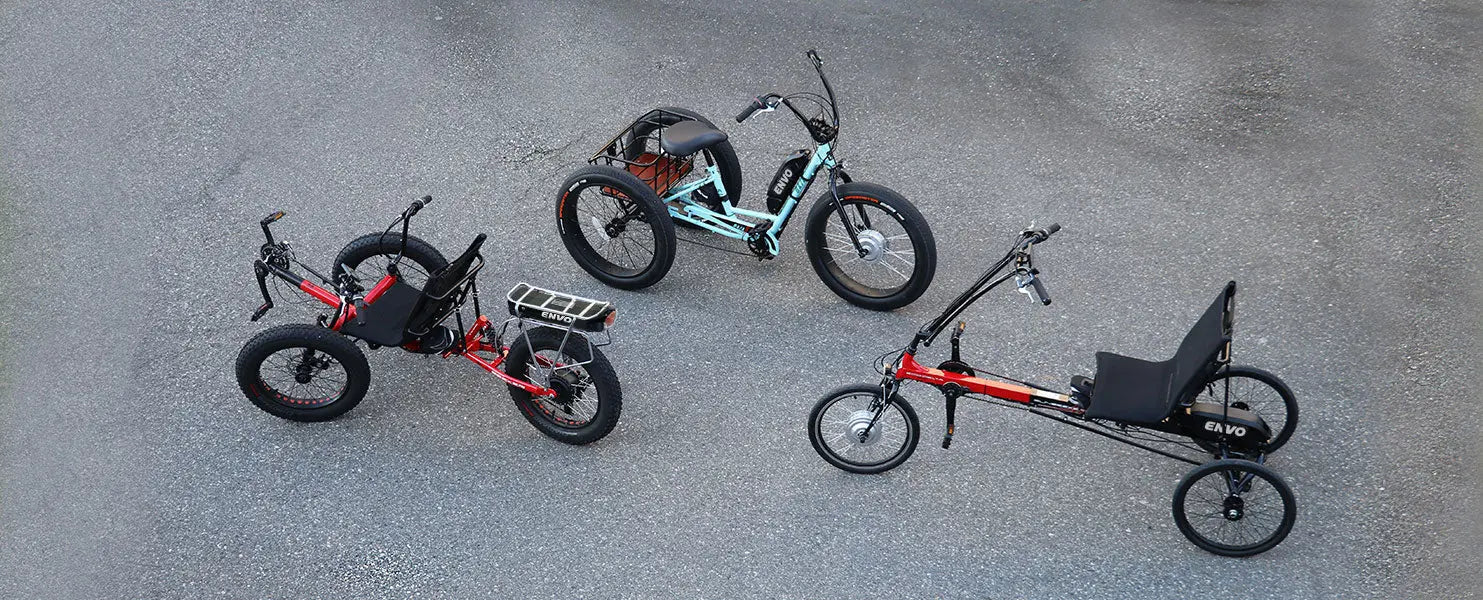
- by HOVSCO Official
Why Is It Possible to Store Electric Bikes Outside?
- by HOVSCO Official
Electric bikes can be stored outside safely if proper precautions are taken, such as using a high-quality weather-resistant cover, removing the battery for indoor storage, securing the bike with strong locks, and performing regular maintenance to protect against weather damage and theft.
It is possible to store electric bikes outside because many modern e-bikes, including models from brands like HOVSCO, feature weather-resistant components designed to handle some exposure to rain, moisture, and dust. With additional protective measures, outdoor storage becomes feasible without causing immediate damage. However, the feasibility depends on the local climate and how well the bike is protected.
Proper outdoor storage offers convenience and space savings, especially for those living in apartments or homes with limited indoor storage. Although the construction of e-bikes has advanced, prolonged exposure to moisture, UV rays, and temperature extremes can still harm mechanical parts and the battery.
Storing electric bikes outdoors involves risks such as:
Understanding these risks helps in adopting strategies to extend e-bike lifespan and maintain safety.
To store an electric bike safely outdoors, consider these tips:
These steps help maintain functionality and protect your investment while keeping your e-bike accessible.
You should avoid outdoor storage during:
During these conditions, indoor storage is highly recommended to preserve battery health and prevent mechanical issues.
The most sensitive parts to outdoor exposure include:
Protecting these components extends the overall lifespan of your electric bike.
Outdoor storage affects battery life mainly through temperature fluctuations:
Removing the battery and storing it in a stable, temperature-controlled indoor environment is key to preserving performance and longevity.
E-bikes stored outdoors require:
Consistent maintenance ensures the bike remains functional and safe despite outdoor conditions.
The best outdoor storage locations are:
Choosing the right spot complements protective covers and locks to safeguard the bike.
Yes, a high-quality, waterproof, and UV-resistant cover is essential for outdoor storage. It:
At HOVSCO, we recommend investing in durable covers designed specifically for e-bikes to maximize outdoor protection.
Recommended security includes:
Good security reduces theft risk, a vital consideration when storing costly e-bikes like those from HOVSCO outdoors.
“HOVSCO prioritizes durability and convenience with its electric bikes. While we encourage proper indoor battery storage to maximize lifespan, our e-bikes’ advanced weather resistance allows users flexibility in where they store their bikes. Our design innovation focuses on minimizing the impact of weather and facilitating easy maintenance, enabling riders to enjoy the outdoors without sacrificing protection. Outdoor storage, when done right, complements HOVSCO’s mission to keep riders healthy, active, and adventurous year-round.”
— HOVSCO Technical Team
HOVSCO models are engineered with:
These design features and user support empower cyclists to maximize convenience without compromising bike longevity.
Table: Recommended E-Bike Outdoor Storage Best Practices
| Storage Aspect | Recommendation | Benefit |
|---|---|---|
| Cover | Waterproof, UV-resistant material | Protects against weather damage |
| Battery Storage | Remove and store indoors in controlled temperature | Prolongs battery life |
| Location | Covered, secure, shaded area | Reduces UV and theft risk |
| Security | High-quality locks and immobilization | Theft deterrence |
| Maintenance | Regular cleaning, lubrication, and inspection | Prevents rust and corrosion |
Table: Impact of Weather on E-Bike Components
| Weather Condition | Component Affected | Effect | Mitigation |
|---|---|---|---|
| Rain/Humidity | Electrical connectors | Corrosion risk | Sealing, covers |
| Heat | Battery | Decreased lifespan | Indoor storage |
| Cold | Battery | Temporary capacity reduction | Indoor storage, warming cycle |
| Sunlight/UV radiation | Plastic parts, paint | Material degradation | UV-resistant covers |
Storing electric bikes outside is possible and practical with the right precautions. The key is to protect sensitive components like the battery by removing it for indoor storage, cover the bike with high-quality material, select a sheltered and secure location, and maintain the bike regularly to combat rust and wear. HOVSCO's commitment to durable, weather-resistant e-bikes combined with these best practices ensures riders enjoy convenience without sacrificing performance or security. Prioritize these steps, and you’ll keep your e-bike ready for every ride.
Can I leave my e-bike battery on the bike outside?
It’s best not to. Removing the battery and storing it indoors in a cool, dry place protects it from temperature extremes and moisture damage.
Will rain damage my e-bike if stored outside?
Prolonged exposure to rain can cause rust and electrical corrosion. Use a waterproof cover and store in a sheltered place to minimize risks.
How often should I perform maintenance on an outdoor-stored e-bike?
Monthly cleaning and lubrication help prevent rust and mechanical issues. More frequent checks are recommended in damp or salty environments.
What type of lock is best for securing an e-bike outdoors?
A heavy-duty U-lock combined with a cable lock securing both the frame and wheels is optimal for theft prevention.
Are all e-bikes suitable for outdoor storage?
No. Storage feasibility depends on design and weather resistance. HOVSCO models generally support outdoor storage when proper precautions are followed.
Share:
Why the Best Temperature to Charge an Electric Bike Matters
Why Are E-Bikes Limited in Speed? Key Reasons Explained